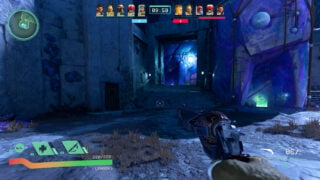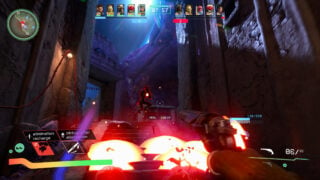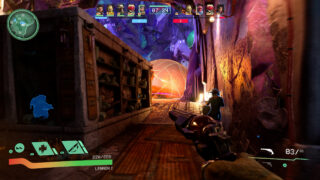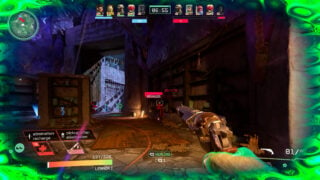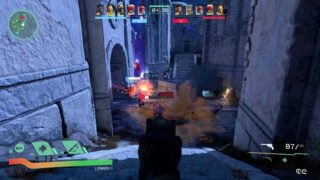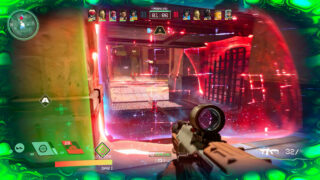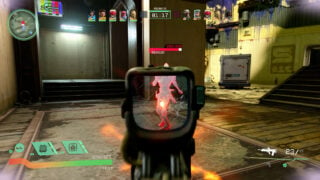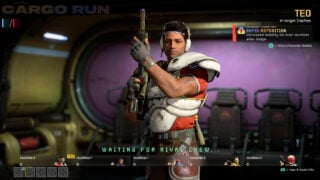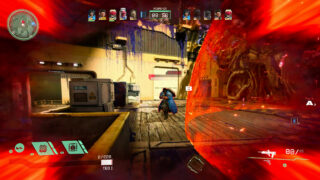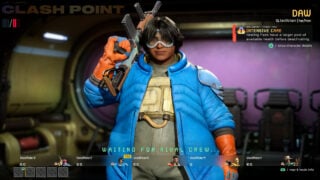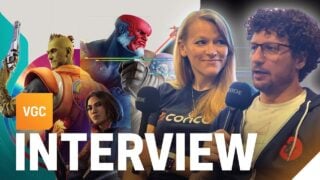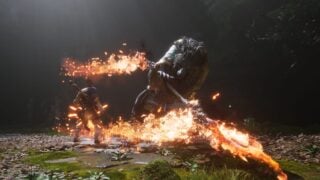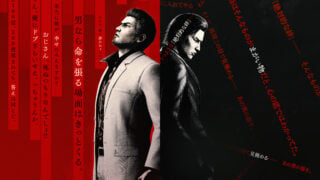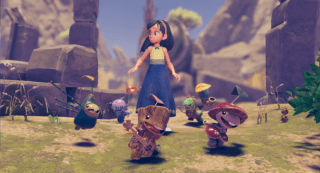First Look: PlayStation’s Concord is breaking new ground in how live service games tell stories
Built by Destiny and Call of Duty veterans, Concord is much more than its quippy trailer would have you believe

When Concord made its gameplay debut at the recent PlayStation State of Play presentation in May, it’s fair to say that the reaction was mixed. While some praised the colourful, characterful vignette, which saw a group of rag-tag characters bicker over a job gone wrong, others weren’t so keen.
The reasons for the tempered reception come down to a few things. Firstly, from a purely personality-based point of view, the quippy, bantering Guardians of the Galaxy-em-up style of dialogue has fallen out of favour with many. While we don’t subscribe to the idea that there was no way to do original odd-couple dialogue pre-Marvel, the prevalence of it in all forms of media has understandably made audiences sour.
The other, and perhaps the most relevant element, is that once the beautifully rendered cinematic was done, what followed was a 5vs5 hero shooter—a genre that’s divisive at best in 2024 and, at worst, a total turnoff for a portion of the player base.
“Yeah, that trailer,” reflects Kim Kreines, Concord‘s director of IP. “That moment is such a tiny slice of everything that we’ve been working on for years and years. We’re excited for the game and for the IP, and for the game to be in people’s hands.

“I’m very excited for folks to delve into the Galactic Guide if that’s something they choose to do, for our vignettes to come out on a weekly basis, they’ll start to fall in love with the depth of the characters. None of that is something you can get in a tiny little slice of it.”
Clearly, only so much of the game can be conveyed in such a short space of time, not to mention how difficult it is to demonstrate Firewalk Studios’ ambitions for its lore and narrative in a 4-minute sizzle.
Recently, VGC had the chance to spend three hours with Conord ahead of its beta release, and while it might not do much for players who’ve entirely written off hero shooters, its storytelling ambition is truly impressive, and could potentially influence the way live service titles tell stories going forward.
We can be heroes
What would a hero-shooter be without heroes? At launch, Concord will have 16. We got to play with ten of them, and from what we can see, there’s genuine variety and a learning curve that will make team-building engaging for players.
Firstly, there’s Lennox, the green scaley chap you saw in the trailer from State of Play. He’s cocky and brash and carries around a pair of revolvers. His gameplay is up close and personal. While he doesn’t have much health, he can heal himself and deal a huge amount of damage in close range.
1-Off, who is a bit like a dustbin on legs, has a vacuum cleaner that absorbs all damage and items on the field, then flings it back towards the other team with devastating effects. Another character, Roka, launches up into the air and reigns rocket fire down from the sky, adding an unexpected verticality to combat.

There’s also your bread and butter FPS character Teo, your healer Daw, and your tank Star Child, a consistent thorn in our sides during our play sessions.
Like the best hero shooters, there’s an evolution in the complexity of the characters, meaning that although you’ll probably start off with Teo, when you get into a game and see a 1-Off on the other team, you instantly want to learn how to play that character properly. There’s a learning curve but in no way does it feel unbalanced.
The characters are also very readable, an attribute that lead character designer Jon Weisnewski tells us is tested via the “around-the-corner test.”
“The idea behind it is that it’s a competitive PVP game, which means that for players to be competent, they need to be able to make a split-second fight or flight decision. It’s an asymmetrical game, so some characters have advantages that others don’t.
“When two characters run around the corner into a combat space, we need players to be able to see a character and get a really strong read and understand who they’re up against.”

At no point during our session did we feel confused as to who was who, and what we should expect from them. This is vital for that split-second decision-making, and the silhouettes of the characters feel varied enough to make even the busiest fights discernable for players.
As is typical, each character can only be picked once per team, meaning that strategic team building is important to doing well. While we didn’t get a great sense of that in our preview, and most of our team seemed to be picking characters based on who looked the coolest (including us), some early strategies did emerge.
There are no limits on how many of a certain type of character can be used, so throwing together a team of the two bulkiest characters and the three lightest was no issue. Everything seems to have a counter, and while every character has its pros and cons, they all seem equally defeatable. Of course, a game’s balance only typically emerges when there are hundreds of thousands of people playing a game, not literally ten, but nothing felt extremely broken.
The personality of the characters also translates to the gameplay, but at no point becomes overbearing, meaning that players who’ve no interest in lore probably won’t notice, but those who engage with Concord’s larger world will get something out of it.
Kreines tells us: “It’s incredible, the ideas that our artists come up with to help represent some of the backstories, the ideas that our artists come up with that fee into that. What’s so cool about this process is neither gameplay, nor narrative, nor art drives, we all steer together.”
So, is it just PlayStation‘s Overwatch?
We were shown three modes during our session with Concord. The first, named Trophy Hunt is a take on the Kill Confirmed-style modes that have been in several shooters over the last few years.
In short, you don’t win purely based on kills, instead, you have to kill your enemy, and then physically travel to that location in order to collect an item from their corpse. The first team to reach the target score wins.
It wouldn’t be a Kill Confirmed mode without people in our team blankly refusing to collect the items that drop from the people they kill, so in that sense, it was very authentic. This was also the only mode we played wherein we were able to respawn, making it fertile ground for trying out all of the different characters.
The next, Clash Point, sees both teams fight over a single point with no respawns. In our session, both teams were charging together and almost instantly wiping, but with more experience, we can see this being one of the game’s most tense modes.
The balance between running in with a very high-damage dealing team versus being cautious and using a team that can soak up damage is a push and pull that will be interesting to see in the final release once players get a better sense of the characters and their abilities.
This is round-based, and it did become slightly tedious when our team was getting stomped to sit through all of the picks, and loading back into another round, but conversely, when it was close, it was a nice respite between the frantic rounds, so your mileage will vary.

The final mode we played was Cargo Run. In this mode, teams start at opposite ends of a map and have to charge to the center to recover a Blue Buddy robot.
Once a team has done this, they then have to take it to an extraction point and guard it. This match type is also no respawn, and we found that to be somewhat of an issue. While the initial battle to grab the Blue Buddy was always fun and chaotic, there didn’t feel like there was much point to the extraction element.
Either the team that collected him had enough players where defending the extraction was trivial, or all players on one team would die, ending the game.
It feels like, perhaps there should be no respawning until the robot is collected, then the team that didn’t grab it can respawn in an attempt to steal it back. As it stands, there’s not a lot of push and pull, making this our least favourite of the three modes we played.
Standing on the shoulders of giants
Concord’s gunplay is excellent, and that won’t come as a surprise to anyone who has paid attention to the team that is making the game. Firewalk is made up of veterans from the biggest and best shooters of the last decade. Former Call of Duty, Apex Legends, Titanfall, and Destiny developers make up the Concord team, and it shows.
When we were asked by colleagues following our time with the game, to sum up how the shooting feels, it’s most easily summarised as, “Destiny shooting, with slightly slower movement, and around double the time-to-kill of Call of Duty.”
If you’ve played as many shooters as we have, you know exactly where you’re operating when you hear something like that. Guns feel weighty, yet precise. Whereas hit-scan weapons in hero shooters can often feel like you’re playing a light-gun game at an arcade, Concord’s shooting feels hefty and provides great feedback as to whether you’re hitting your shots or not.

“The gameplay foundation was a huge emphasis for the game. It’s one of the things that made me want to work there,” Weisnewski tells us. “As a gameplay designer, knowing that the founders of the studio were building a team made of veterans who know how to make good gameplay was huge. When I saw the team and I heard the vision for the game, I knew this was where I had to work.”
We asked if it was at all frustrating from a gameplay development perspective that as soon as anyone starts showing a live service hero shooter, everyone brings up Overwatch.
“I’m not bothered by it at all,” says Weisnewski. “Overwatch is a great game and that team did some incredible stuff for the genre. At the same time, I strongly believe that our game has an identity that is unique to itself and that it plays like nothing else out there.”
Guardians of the Galactic Guide
The final, and perhaps most surprising element of Concord is its approach to narrative and lore. Live service games have been attempting to tell stories in concurrence with their gameplay for some time. In the likes of Warzone, huge map-changing events are rolled out every so often, which usually includes a short cutscene that most players try to skip through.
Fortnite, in many ways the progenitor to this type of storytelling, has been producing large-scale cinematic trailers to coincide with its weeks-long in-game narrative arcs.
Going further back than that, in the early days of Overwatch, outside of the introductory cutscene and a few character trailers, the game’s narrative was largely conveyed via voice lines, and breathless articles online shipping characters together.
Concord is taking a much more extreme approach. During each season, weekly vignettes will be released in-game. These cutscenes explore the world of the characters, their backstories, and the overarching story of that season. Firewalk says it has a large number of these episodes mapped out and plans to continue them for the foreseeable.
There’s also the Galactic Guide. This feels like an in-game version of the level of lore that most live service games hide on a website, or in a physical lore bible. Essentially, the whole galaxy of Concord is mapped, and you can read information about each of the planets featured.

This, in conjunction with the vignettes, renders the world of Concord, and Firewalk says it’s their most vital storytelling tool. It’s easy to imagine a future season wherein the season-long threat is first teased in an update to the Galactic Guide for players to find. Perhaps a new character makes their debut on an of-ignored planet in the guide.
Firewalk itself knows that not every player is going to engage with this.
“It’s an added layer for folks that want to invest in it and it’ll come across to everybody who’s playing. You’ll get little pieces, even if it’s not your jam, that’s totally fine,” says Kreines.
“So even if you’re somebody who’s just there for the gameplay, we hope that the flavour you absorb enhances that, and it feels like all part of the package. If that’s not where you want to invest time, you don’t have to, if that’s where you do want to invest, we give you that option.”
This is, on paper, exciting. The Galactic Guide reminded us of one of those interactive CDs you’d get in the early 2000s with a map of all of the planets in Star Wars. If you’re a lore nerd, there are hours of facts and history to pour over.
Our only hesitation is the scale of the content promised. If Concord starts off gung-ho with consistent vignettes every week, that’s a cadence that Firewalk can’t really afford to drop. Marry that to the expectation of content like new maps, and it’s easy to see a world in which the team gets overwhelmed.
“We’re in a pretty unique space here,” Kreines tells us. “There was never a time when this narrative and this lore wasn’t going to be a big part of what we were developing, we were just looking for the best way to roll that out to players.
“How do we give folks a chance to fall in love with (the characters)? How do we get that information to them? How are we going to allow players to explore the galaxy?”
Fee to pay
Concord will be priced at $40/£35 at launch, with all future characters and maps coming for free. So, in the world of ballooning budgets and games having to make money perpetually to support live-service costs, how is Firewalk planning to do that?
“We’re going to launch with our 16 characters, 12 maps, and 6 modes,” Kim Kreines tells us. “That’s all included when you buy the game, and seasonally we’re providing new maps, new modes, and new characters, alongside their unfolding story.
“There are purely cosmetic pieces that you can choose to further customize the look of your character, that you can choose to purchase. Those do not affect gameplay. We believe so strongly that the full experience should be available to all of our players.”

Firewalk is saying all the right things. It’s also made a game that, based on our early playtest, feels great. While the recent reveal was arguably a misstep (a sentiment echoed by most members of the media in attendance at our session) it doesn’t portray the high-quality shooter that Firewalk has produced.
However, with the hindsight of now knowing the lengths that the team is going to make lore such a key part of the overall package, it makes sense why the decision was made to lead with that in the State of Play, even if some viewers got the wrong end of the stick.
What Firewalk needs to spend far more time doing is showing off the game’s gunplay, which, if it reaches the right audience, has real staying power. We want to play more, see more maps, and meet more characters. Mostly, we just want to shoot more guns.
That’s the audience the game must hook if it’s to be PlayStation’s second live-service smash this year. It’s not PlayStation’s Overwatch. It’s more like PlayStation’s Destiny-Valorant-CoD-em-up. Try fitting that into a trailer.
